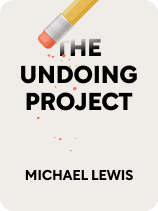

This article is an excerpt from the Shortform book guide to "The Undoing Project" by Michael Lewis. Shortform has the world's best summaries and analyses of books you should be reading.
Like this article? Sign up for a free trial here.
Do you dwell on “what might have been”? Is it possible to undo the past by rewriting painful memories?
Psychologists Daniel Kahneman and Amos Tversky sought to understand how people deal with the past. At the root of this exploration were Kahneman’s thoughts about how people avoid feelings of regret and the mental permutations they go through in order to cope with regret in the present.
Continue reading to learn about Kahneman and Tversky’s simulation heuristic.
The Theory of Undoing
Following their development of prospect theory in the 1970s, Lewis says that Kahneman turned his attention back to the power of regret—but this time as it connects to grieving events in the past. He’d observed that people experiencing grief try to “undo” the pain of a tragedy by dwelling on what might have happened to prevent it (hence the term “undoing”). This would lead to the development of the simulation heuristic.
(Shortform note: The most common understanding of grief is based on the five stages identified by Elisabeth Kübler-Ross in On Death and Dying—denial, anger, bargaining, depression, and acceptance. However, the “five stages” concept has been criticized as unscientific. To be fair, in her book On Grief and Grieving, Kübler-Ross herself points out that she never intended for the five stages to be interpreted as a literal, linear progression.)
Because of their geographic separation, Kahneman developed most of his work on undoing without being able to bounce ideas off his partner. Lewis notes that Tversky contributed some material to the project, but he spent much of his time giving lectures abroad.
In their studies, Tversky and Kahneman uncovered a fourth heuristic of the mind, one in which we create alternate realities to avoid the pain of tragedy and frustration.
Lewis says they named their new mental model the simulation heuristic, referring to the power of “what might have been” to cloud present-day judgments and decision-making. Imagining an alternate, happier life offers a temporary salve to feelings of sorrow, but it also contaminates our perception of reality by evoking feelings of envy and regret for paths not taken.
| Dwelling on the Past vs. Living in the Present Many wellness experts warn against the dangers of engaging the simulation heuristic; instead, they espouse living in the moment as a balm for anxiety and depression. In The Power of Now, Eckhart Tolle explains that ruminating on the past leads to resentment and bitterness, while accepting the highs and lows of the present allows you to face them without wishing them away. This thought is echoed in Radical Acceptance by psychologist Tara Brach, who says the stories we create to undo our frustrations are unhealthy coping mechanisms that only lead to us feeling unworthy and unhappy. She argues that accepting the present as it is allows us to recognize our reality and treat ourselves with compassion. |
Kahneman and Tversky suggested that these “might have been” fantasies use counterfactual emotions to cover up uncomfortable realities. Lewis explains that the strength of those emotions depends on how close the alternate reality is to the present. For example, imagining a different career choice made 20 years ago carries less emotional weight than imagining you made a different choice yesterday. What also determines the strength of counterfactual feelings is how realistic and desirable the alternate reality seems. For example, imagining that you could have dealt with a problem at work more gracefully engenders stronger feelings than imagining you could’ve avoided the issue by spending the last 10 years as a beachcomber.
(Shortform note: The feelings aroused by missed opportunities may become even more harmful as we age. Research has shown that letting go of what might have been leads to better mental health later in life. In The Power of Positive Thinking, Norman Peale recommends creating a daily ritual to move on from whatever mistakes you might have made.)
Kahneman dubbed the process of rewriting painful events “undoing,” which he interpreted as a coping mechanism to deal with life’s infinite possibilities. Lewis states that, in their research, Kahneman and Tversky established four rules the mind follows when undoing the past:
- The more separate events we have to undo at once, the less likely we are to do so.
- The farther events retreat into the past, the harder they become to undo.
- In undoing, we imagine a person making a different choice, and not merely a different random circumstance.
- In undoing an event, we tend to disregard any unexpected aspect of what occurred.
Because of the process of undoing, Tversky observed that, for the mind, reality isn’t fixed. Instead, it’s a haze of possibilities. (Shortform note: Further work on the process of undoing was continued by Kahneman’s colleague Barbara Fredrickson, who revealed that positive emotions can undo the physiological effects of negative emotions. However, a later study by Melissa Falkenstern showed that the cognitive effects of negative emotions aren’t as easily undone.)

———End of Preview———
Like what you just read? Read the rest of the world's best book summary and analysis of Michael Lewis's "The Undoing Project" at Shortform.
Here's what you'll find in our full The Undoing Project summary:
- The mental errors that skew your daily decisions
- How to avoid the unconscious pitfalls of the mind
- How Daniel Kahneman and Amos Tversky formed their famous partnership






